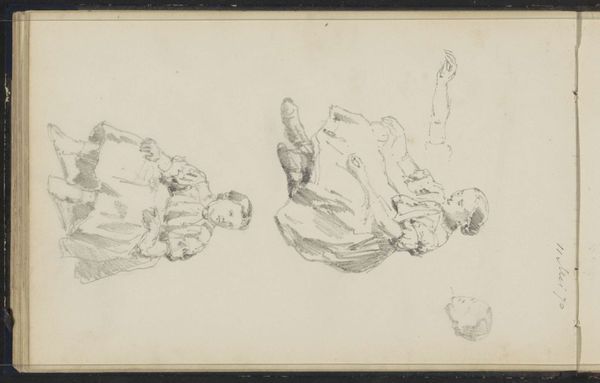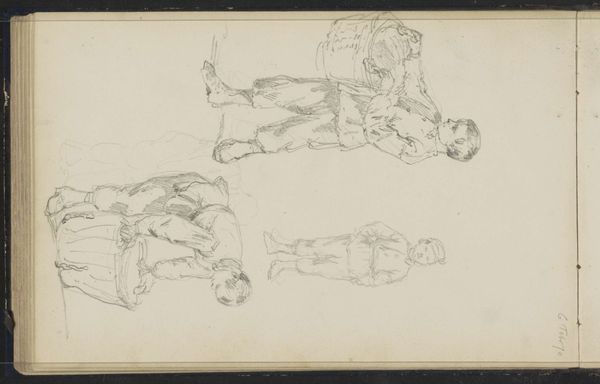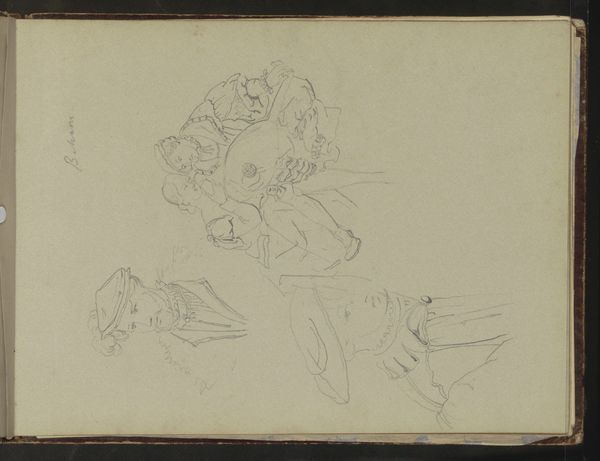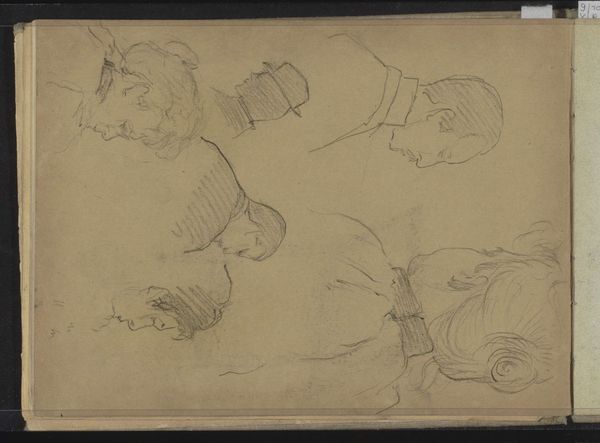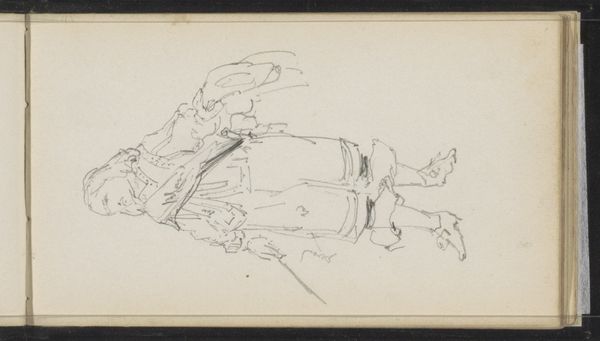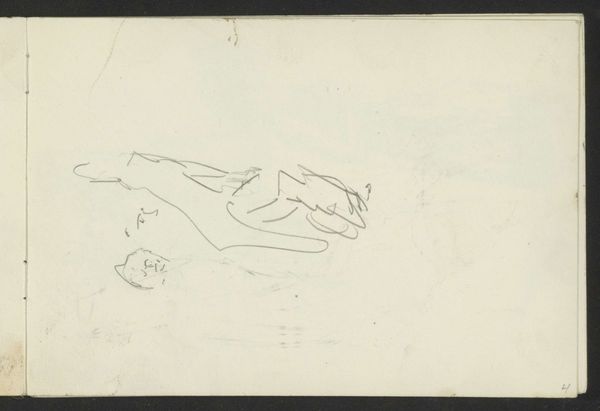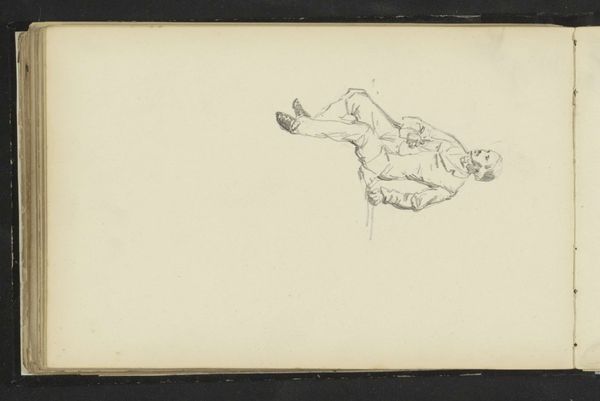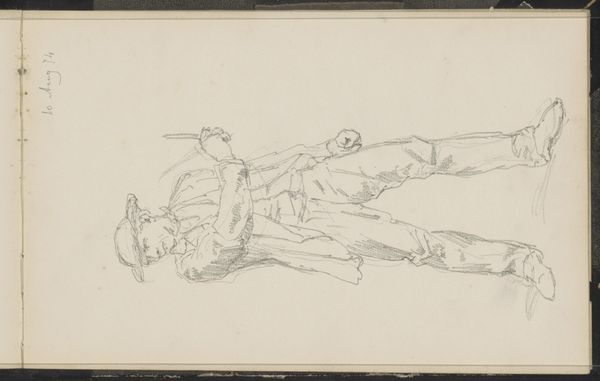
drawing, paper, pencil, graphite
#
portrait
#
drawing
#
imaginative character sketch
#
quirky sketch
#
sketch book
#
figuration
#
paper
#
personal sketchbook
#
sketchwork
#
ink drawing experimentation
#
pencil
#
graphite
#
sketchbook drawing
#
watercolour illustration
#
genre-painting
#
storyboard and sketchbook work
#
sketchbook art
#
profile
Copyright: Rijks Museum: Open Domain
Curator: Here we have "Twee mannen en een vrouw," or "Two Men and a Woman," a drawing attributed to Cornelis Springer, dating roughly from 1846 to 1882. It's a graphite and pencil drawing, held in the collection of the Rijksmuseum. My immediate response is, it feels like eavesdropping. A candid glimpse into a private sketchbook. Editor: Indeed! It's remarkably intimate. The figures, rapidly sketched on paper, give off a strong narrative feeling—almost like actors paused between scenes. The lines seem spontaneous and energetic, full of life and suggestion, with each of them seeming to symbolize something, perhaps elements from an unfolding drama. Curator: The historical context here is interesting. Springer was known for his architectural paintings, and sketches like these were likely studies. The loose application of graphite allowed the artist to get something close to accurate placement of shadow, proportion, and composition, but also may reveal his preparation work for a larger piece. Editor: Precisely. The costumes are revealing, with one figure holding a sword. He exudes a specific time; perhaps there is some political tension embedded? They're very detailed and evoke both rank and profession. We've a standing gent in some state of readiness with all that regalia. Then, to contrast, what does this figure laying down represent. Curator: Perhaps weariness from the standing mans duties? Perhaps a critique? Consider the role of the art institutions of the time and Springer's ambition. It might speak to social structures but may not! He also may have used these drawings in his personal artistic process to further himself professionally. These institutions of display could be a social statement alone. Editor: Yes, how can these objects gain or retain iconographic potential to the benefit or detriment of our memory of the individual, their life, or even the time. These quick sketches suggest, maybe, an attempt to capture archetypes, of universal aspects of character. The woman figure would surely give greater insight to all three elements. It feels significant in her omission. Curator: Interesting thoughts on how absences may represent a silent statement. This all brings the work and artist full circle. Editor: Thank you! Seeing them is something indeed.
Comments
No comments
Be the first to comment and join the conversation on the ultimate creative platform.
